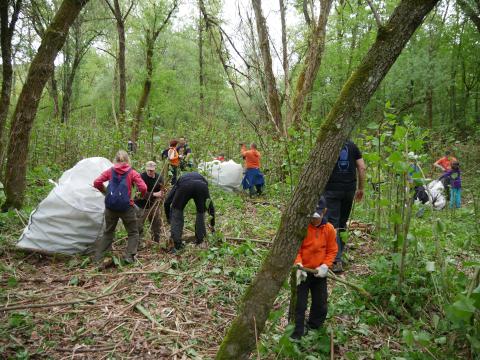Ljubljana turned invasive plants into recycled paper
The initiative began with voluntary Japanese knotweed removal campaigns, after which the plant’s dry stems were harvested, ground and processed into paper. Ljubljana is one of the first paper producers in the world to use Japanese knotweed at a semi-industrial level.
The innovative solution tackles the problem of invasive non-native species in an innovative way aligned with the principles of circular economy. The city used the resulting paper for the production of paper bags and notebooks, and the public company Snaga printed the English version of its magazine Snagazin on it.
The paper-manufacturing project from Japanese knotweed gave the city an opportunity to find inventive solutions to deal with this invasive plant while also putting the circular economy into practice in Ljubljana.
The idea of producing paper from Japanese knotweed on a semi-industrial scale was a pilot project. The main concern was the effect of Japanese knotweed pulp on papermaking machines. Another concern was the content of impurities in the paper that can affect printing. As it turned out the knotweed paper was quite easy to print on, and no additional measures needed to be implemented.
- The paper production attracted significant media attention and was well received by experts and the public.
- As a ‘zero waste city’, Ljubljana focused on controlling the invasive plant population by developing circular production processes, thereby reducing CO2 emissions in the city and increasing the resilience of local economies and environments.
- With the help of improved technologies and knowledge of traditional craftmaking, Japanese knotweed can serve as an input for paper production.
- By introducing ways to use Japanese knotweed as a local source of cellulose, the project started to encourage new community economies and projects and promoted a trans-disciplinary approach to the issue of invasive species.

